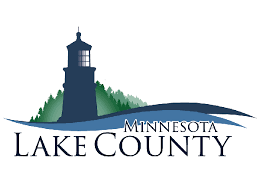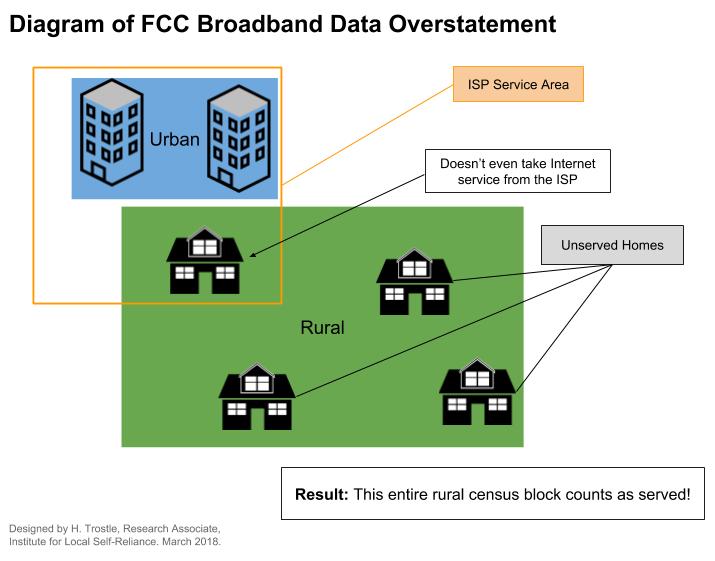
Fast, affordable Internet access for all.

In his recent article written for NBC News, journalist Phil McCausland examines the impacts broadband access can have on rural communities and the challenges that persist in bringing coverage to these isolated areas. Reliable high-speed internet access can spark economic development in some of the United State’s most cash-strapped areas, but a lack of dependable data makes acquiring funding difficult.
McCausland explores how high-speed Internet access is becoming increasingly essential for communities’ economic growth. He spoke with Roberto Gallardo, the assistant director of the Purdue Center for Regional Development, who explained how having broadband access today “is analogous to the installation of a railroad 100 years ago or a highway 50 years ago.”
Bringing Broadband to Rural Areas
McCausland investigates the specific case of Lake County, Minnesota, an area home to 10,000 people that spans 3,000 square miles in the far northeast part of the state. Our 2014 report, All Hands on Deck: Minnesota Local Government Models for Fiber Internet Access, describes how the Minnesota legislature set a goal in 2010 to achieve universal access to high speed broadband throughout the state by 2015, including in Lake County. Many of Minnesota’s local governments stepped up to try to accomplish the goal. Local leaders in Lake County decided that they needed high-speed internet in order to take part in the growing digital economy. McCausland found that after nearly eight years of planning and an investment of over $80 million dollars, the area is seeing the economic benefits of high-speed Internet access. Coverage has boosted tourism and allowed for lifestyles that involve working remotely, as well as becoming essential to the growth of local businesses.
 While conclusive data on the exact economic outcomes are yet to come, McCausland’s interviews in the area reveal that many local residents already feel a direct impact. Local sawmill owner, Greg Hull, has seen an increase in business since receiving broadband coverage. He now has an improved website that “made [his company’s] whole Internet presence a lot more viable, which has in turn opened the exposure.” Hull’s business is not the only one benefiting. A report by the Blandin foundation estimates that the area has the potential to realize a combined household economic benefit of over $13 million and a combined increase in residential real estate value of over $38 million.
While conclusive data on the exact economic outcomes are yet to come, McCausland’s interviews in the area reveal that many local residents already feel a direct impact. Local sawmill owner, Greg Hull, has seen an increase in business since receiving broadband coverage. He now has an improved website that “made [his company’s] whole Internet presence a lot more viable, which has in turn opened the exposure.” Hull’s business is not the only one benefiting. A report by the Blandin foundation estimates that the area has the potential to realize a combined household economic benefit of over $13 million and a combined increase in residential real estate value of over $38 million.
Finding Project Funding
American Recovery and Reinvestment Act (ARRA) funds from 2010, local investment, and FCC Rural Broadband Experiment awards made the project possible. ARRA provided funding to extend broadband access to rural areas often overlooked by major telecom companies due to high infrastructure costs. Incumbents Mediacom and Frontier significantly delayed the project when they challenged utility pole ownership. After the pole delay, which caused changes to the original plan that needed RUS approval, Lake County still managed to develop a project to bring broadband to a huge geographic area.
Battling Bad Data
While there are other funding opportunities that rural areas can take advantage of, another major issue that McCausland’s article draws attention to is the faulty data collection techniques on existing coverage to know where to invest effectively.
The FCC and state commissions now rely on Internet service providers to self-report their coverage areas based on census blocks. McCausland spoke with Johnathan Hladik, the policy director for the Center for Rural Affairs. Hladik explained how these maps are typically riddled with inaccuracies because service providers can mark a census block as “served,” even if only one household within it has broadband access. This is a huge problem for rural communities because state and federal agencies use this inaccurate data to determine where to direct investments.

McCausland describes FCC’s Mississippi map that states that 98 percent of the state has access to 4G LTE wireless Internet connectivity, which according to Sen. Roger Wicker, R-Miss., is an “absurd” conclusion. The FCC planned on using this map to decide where to place $4.5 billion in rural broadband subsidies, until Wicker led a group of senators in demanding the FCC to reconsider its conclusions.
While speaking on the floor of the Nebraska legislature, Hladik described ways in which data reporting can become more reliable in order to help bring coverage to areas, like rural Mississippi and Nebraska, that need it most. He said:
“The state should require that data collection and mapping be done at the address level and it should include the speed, type of technology, service area location and any limitations for service... [Internet] Service providers should provide this information to the FCC or state commission and standardize the data.”
McCausland argues that investing in high-speed Internet access is one way that rural communities that are struggling to hold onto residents and businesses can survive, and even thrive. We’ve documented numerous examples of economic development achievements credited to communities gaining access to broadband. However, when rural areas rely on outside funding to get their projects started, data collection can make or break their chances of moving forward. Having reliable and accurate data of existing coverage is one step in ensuring that funding goes to the places that need it most.
